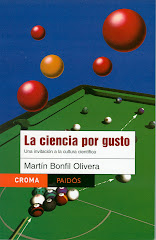by Martín Bonfil Olivera
Published on Milenio Diario, November 26, 2008
 Its true: trips make you wiser . Last week I had the opportunity of going to Oaxaca. I found a very prosperous and modern city, with better urban and touristic infrastructure than before, and that nevertheless has not lost its traditional flavor. Luckily, it's still humane, livable city. Also, a city that has not managed to overcome the great problems that affect one of our country's poorest states, where there's a lot of inequality.
Its true: trips make you wiser . Last week I had the opportunity of going to Oaxaca. I found a very prosperous and modern city, with better urban and touristic infrastructure than before, and that nevertheless has not lost its traditional flavor. Luckily, it's still humane, livable city. Also, a city that has not managed to overcome the great problems that affect one of our country's poorest states, where there's a lot of inequality.
It was also a trip to my roots, because I was invited to give a science talk in the Colegio de Estudios Científicos y Tecnológicos (College of Scientific and Technological Studies) in Etla valley, where my great-great-grandfather, doctor Mariano Olivera, was born in 1824.
The pleasure of the visit increased because on a Oaxaca bookstore I was lucky to find a book that I had been looking for for some time ago: Oaxaca Journal (National Geographic, 2000) by Oliver Sacks, the famous writer and neurologist, author of the master piece The man who mistook his wife for a hat and other books such as Awakenings (which in 1990 was turned into a movie starring Robert de Niro and Robin Williams), An anthropologist on Mars or Uncle Tungsten: memories of a chemical boyhood. All of them highly recommended.
It turns out that Sacks visited Oaxaca in 2000 as part of a trip organized by the American Fern Society, a group of enthusiasts for this plants (technically known as pteridophytes) of which he is a member.
Sacks dedicates his book to the enthusiasts —of the rocks, birds, astronomy— and his reading confirms why these groups of lovers —amateurs— are still important, not only because of the scientific contributions that they constantly make, but also because they preserve and transmit the joy of directly observing nature. Apart from his delicious prose, Sacks book offers the view of a foreign person in a culture he did not know and that he feels very different from his ("a new world", he writes).
He finds meals with grasshoppers and worms, markets, traditions, poverty and diseases, ancient civilization ruins and colonial convents, the ancient árbol del Tule (Tule tree), the old method for obtaining colorant from the cochineal insect… and of course, a lot of ferns.
A neurologist and writer, and fern enthusiast, describes the culture of
To receive Science for pleasure weekly
in your email, subscribe here!







